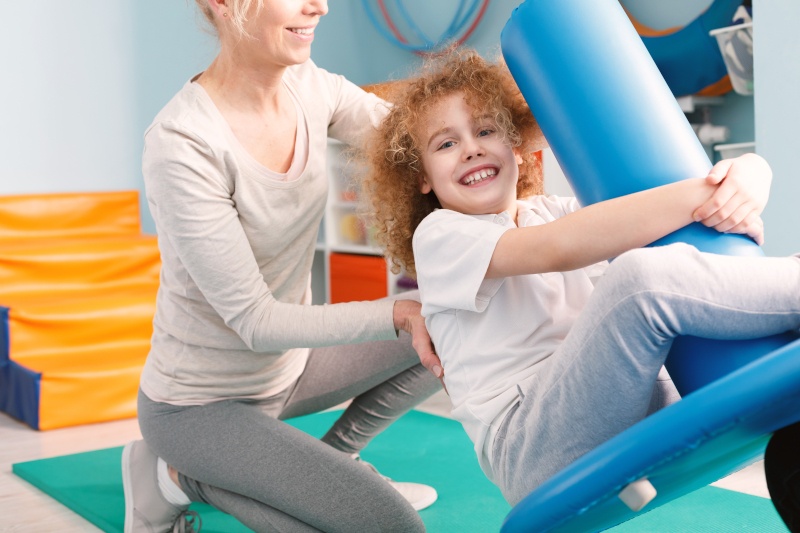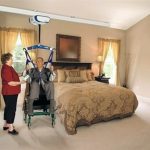
When you’re looking into buying pediatric equipment, your mind is likely full of questions and perhaps some doubts and fears.
You may wonder, “What is pediatric equipment and how do I know exactly what my child requires … or what’s available? And how am I going to pay for it?”
This is a tense, often overwhelming time, but don’t worry. The team at Conval-Aid/Conval-Kids are here to walk you through all your issues and questions, and to help you with the process of purchasing pediatric equipment.
Let’s start by explaining some essential concepts.
What Is Pediatric Equipment?
By “pediatric equipment,” we mean equipment and supplies designed to improve the quality of life for children and youth with special needs. These aids can facilitate your son or daughter’s mobility, accessibility, care, and/or physical comfort. What’s included in this category? A range of essential items such as wheelchairs and other ambulatory devices, positioning assistive products, adaptive commodes, and accessible shower systems.
When Is Pediatric Equipment Needed?
Pediatric equipment is needed by children and adolescents whose abilities are limited due to accident, illness, or congenital conditions. The initial diagnosis of the condition is usually made in hospital or by your family pediatrician. Normally, the young person is then referred to a physical therapist (PT), who thoroughly assesses the patient’s ability and needs. Based on that assessment, the PT will recommend the appropriate equipment — a mobility aid and/or other devices — hand in hand with a personalized program of physical therapy.
How Does Pediatric Equipment Differ From Adult Mobility Aids?
Adults are finished growing; children are not. This simple fact has a profound impact on the type and variety of assistive devices.
As your child’s bones grow and develop, he or she will need to work their muscles, developing them in order to be able to move and bear weight. A gait trainer (“walking frame”) is helpful for this purpose; the supportive frame trains kids how to walk and develops their mobility functions. Adaptive tricycles and bicycles are designed to strengthen growing muscles too; in addition, they provide a sense of fun and freedom important to a youngster living with a disability.
What Is The Step-By-Step Buying Process For Pediatric Equipment?
The first step in the buying process is to make an appointment with Jacques, the experienced, friendly pediatric equipment specialist at our Conval-Kids division.
On the day of the appointment, the parent or guardian should be accompanied by the child, if possible, to ensure that equipment is sized correctly and well fitting. It’s important to bring the professional recommendation or prescription with you. We suggest writing down your questions beforehand, so that Jacques will be able to provide the answers you need and reassure you and your child about any concerns you may have. We at Conval-Aid keep a broad range of high-quality pediatric equipment in stock. This allows families who purchase equipment immediately to choose whether to take the items home with them or have us deliver to their door. Occasionally, some prescriptions will require a special order. In such a case, we will notify you as soon as your child’s equipment becomes available. Once again, you’ll have the option of pickup or delivery to your home.
Financing or Support Programs For Pediatric Equipment
Good pediatric equipment tends to be expensive. However, there are several sources of assistance with financing, particularly when it comes to children’s needs. We describe the most common sources below; feel free to contact us to discuss potential funding and services in greater detail.
If your application for funding is approved, Conval will be happy to invoice the organization directly.
ADP
As with adult assistive devices, the cost of pediatric equipment will normally be subsidized by the Assistive Devices Program (ADP). Percentages have changed over the years, but currently the ADP will cover 75 percent of costs. To qualify, you and your child must be Ontario residents with a valid OHIP card. Your citizenship and household income are not considered. A diagnosis and prescription by an authorized health practitioner – such as a physician or physical therapist – will be required.
Our Conval-Kids staff can help you put together all the necessary paperwork and submit your completed application to ADP. Be aware that it could take several weeks for approval. The good news is that pediatric equipment has a high chance of being approved for coverage. As your child grows, ADP will help finance the replacement of equipment that has become too small. (However, they do not, as a general rule, cover equipment rental, repair, or the replacement of lost items.)
Easter Seals
The Easter Seals program may fund up to $30,000 per year, regardless of income, for expenses for physically disabled children and youth.
Assistance for Children with Severe Disabilities
The ACSD program may provide $25-$500 monthly to assist with costs of equipment and care for severely disabled children, depending on family size and income.
CHEO Foundation
The CHEO Foundation provides help to children and youth with multiple physical and developmental disabilities.
Renting Pediatric Mobility Equipment
You might be wondering whether renting pediatric mobility equipment could be a better idea than purchase – at least until your child has stopped growing. If you are planning to apply for OADP support, though, bear in mind that the Ontario Assistive Development Program does not subsidize the costs of rental.
However, there are times when renting pediatric assistive devices will work out very well. For example, when you are a first time buyer, you may want to give your child an opportunity to try the product out before committing yourself to a substantial purchase. Alternatively, you might opt to rent equipment as a temporary measure while you are waiting to receive the OADP approval of your funding application.
Conval-Aid Is Here To Help
We hope that this information has helped to demystify the subject of pediatric equipment. Please don’t hesitate to contact us for expert answers to your questions or to book an appointment with our pediatric specialist Jacques.





